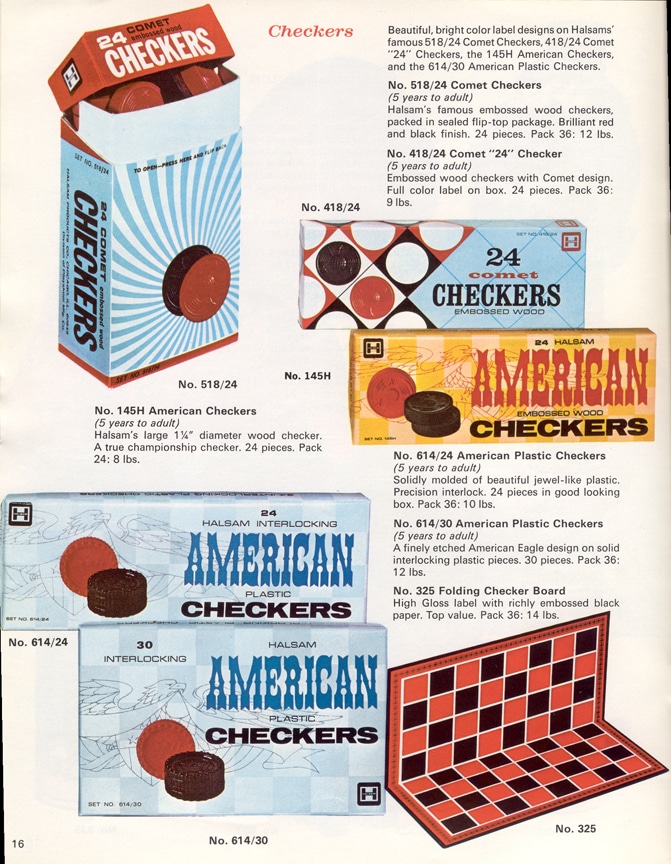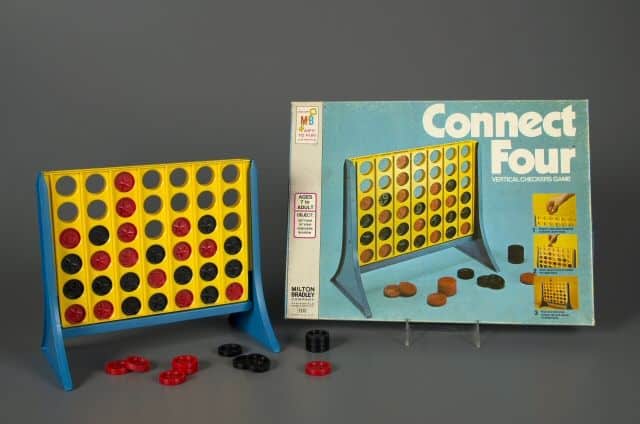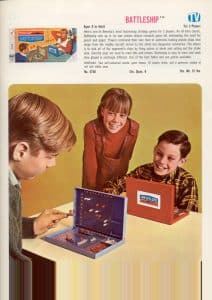Growing up in a small town on a street full of houses populated by kids my age, I always found ways to occupy my weekends and summers. Often that meant playing next door with my friend Christine, either on her front porch or in her horse-themed bedroom. Time with Christine usually involved a game or two. We liked all kinds: card games (war, go, and gin rummy), board games (Life, Clue, Monopoly, and Charlie’s Angels), and my personal favorite, one-on-one strategy games. Christine and I were well matched and equally competitive in our game play. Because of that, even the same games never bored us. We always found ways to create new strategies and learn from one another. Looking back on those days, three one-on-one strategy games stand out in my memory:
 3. Checkers Known as “draughts” in England (and several other countries), checkers’ status as a classic one-on-one strategy game earned it a place in the National Toy Hall of Fame in 2003. Even small children can grasp the game’s straightforward objectives. Reaching the last row (the crownhead row) and announcing to your opponent “king me,” introduces additional strategies such as moving the piece backwards. I never had to consult the rules, because once you played a few times you had a pretty good idea of what they were.
3. Checkers Known as “draughts” in England (and several other countries), checkers’ status as a classic one-on-one strategy game earned it a place in the National Toy Hall of Fame in 2003. Even small children can grasp the game’s straightforward objectives. Reaching the last row (the crownhead row) and announcing to your opponent “king me,” introduces additional strategies such as moving the piece backwards. I never had to consult the rules, because once you played a few times you had a pretty good idea of what they were.
 2. Connect Four Created by Howard Wexler and introduced by Milton Bradley in 1974, Connect Four offers a variation on checkers. Also known as “Four in a Line,” Connect Four uses a vertical plastic structure with seven columns and six rows. The primary object is to get four checkers in a row (horizontally, vertically, or diagonally) while your opponent attempts to block your progress. I rapidly learned the crucial role of placement for each piece. Since you drop the checkers from the top through small slots, you always need to account for where gravity will lead your checker to end up. Miscalculating could determine whether you won or lost. I’m still playing Connect Four today. In fact, my six-year-old nephew recently challenged me to a few rounds, some of which he even won legitimately!
2. Connect Four Created by Howard Wexler and introduced by Milton Bradley in 1974, Connect Four offers a variation on checkers. Also known as “Four in a Line,” Connect Four uses a vertical plastic structure with seven columns and six rows. The primary object is to get four checkers in a row (horizontally, vertically, or diagonally) while your opponent attempts to block your progress. I rapidly learned the crucial role of placement for each piece. Since you drop the checkers from the top through small slots, you always need to account for where gravity will lead your checker to end up. Miscalculating could determine whether you won or lost. I’m still playing Connect Four today. In fact, my six-year-old nephew recently challenged me to a few rounds, some of which he even won legitimately!
 1. Battleship As far as I’m concerned, “You sank my battleship!” ranks among the most memorable lines from a television commercial, and Battleship stands as my all-time favorite one-on-one strategy game. Battleship consists of two separate units, each consisting of two grids and five ships. Each player places the ships somewhere on the lower grid while using the upper grid to keep track of areas where you’ve “fired” at your opponent. Battleship begins as a game of chance; however, once a player “locates” the secretly placed battleship, the game shifts into strategy mode. My friend Christine and I engaged in battle after battle, always trying to stump one another with the placement of our ships. Though originally played using pencil and paper in the early 1900s, today Battleship is produced as a packaged game by Milton Bradley. There are also versions that can be played online, on video game consoles, and through mobile phone applications. Battleship remains a timeless game that is great for kids of all ages.
1. Battleship As far as I’m concerned, “You sank my battleship!” ranks among the most memorable lines from a television commercial, and Battleship stands as my all-time favorite one-on-one strategy game. Battleship consists of two separate units, each consisting of two grids and five ships. Each player places the ships somewhere on the lower grid while using the upper grid to keep track of areas where you’ve “fired” at your opponent. Battleship begins as a game of chance; however, once a player “locates” the secretly placed battleship, the game shifts into strategy mode. My friend Christine and I engaged in battle after battle, always trying to stump one another with the placement of our ships. Though originally played using pencil and paper in the early 1900s, today Battleship is produced as a packaged game by Milton Bradley. There are also versions that can be played online, on video game consoles, and through mobile phone applications. Battleship remains a timeless game that is great for kids of all ages.



